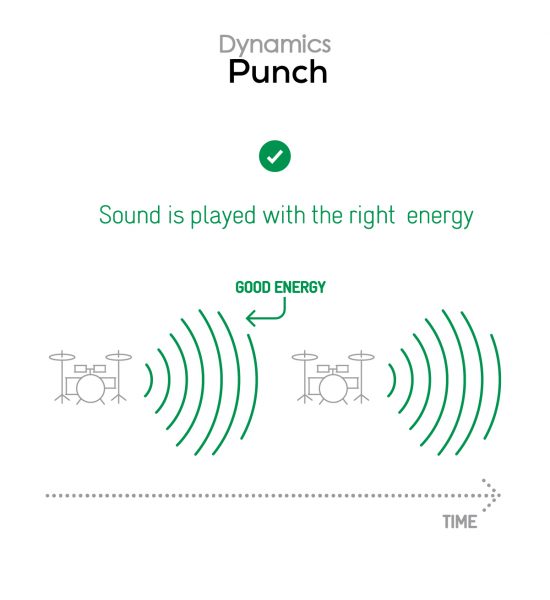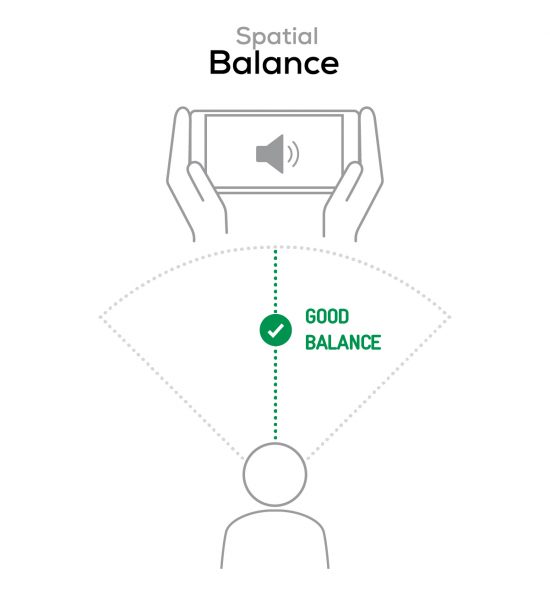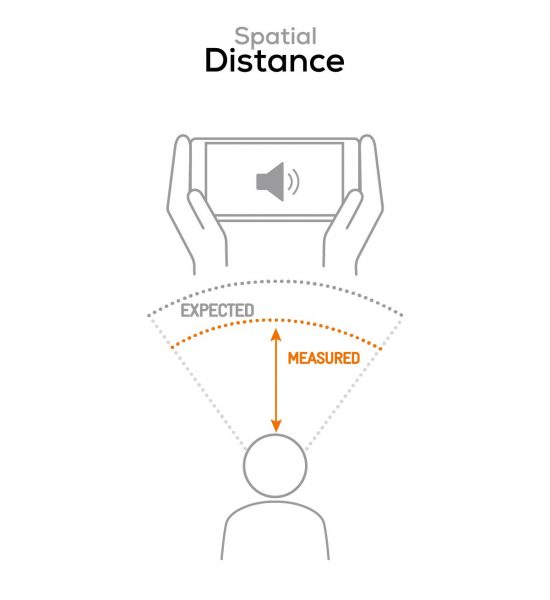The Xiaomi Mi 10S is the much-anticipated new flagship from the Chinese brand, and it comes with a spec sheet loaded with new features. This starts with the new Qualcomm Snapdragon 870 5G mobile platform with a “large vapor cooling system,” a curved 6.67’’ AMOLED screen with a 90Hz refresh rate, four full-function cameras, and a beefy 4780 mAh fast-charging battery.
Audio is no exception. The Xiaomi Mi 10S has dual symmetrical speakers, and according to the brand, the industry’s largest 0.7 mm speaker amplitude. The audio system was tuned by audio giant Harman Kardon. But for now, anyway, the Mi 10S will be sold only in China.
Xiaomi devices have excelled in our previous audio tests. The Mi 10 Pro held the top global score for a year (until the Asus ROG Phone 5 toppled it in February 2021), so we were very curious to see how the new device would measure up to its brand sibling.
Audio specifications include:
- Symmetrical dual speakers, one top side-firing, one bottom side-firing.
- Tuned by Harman Kardon
About DXOMARK Audio tests: For scoring and analysis in our smartphone audio reviews, DXOMARK engineers perform a variety of objective tests and undertake more than 20 hours of perceptual evaluation under controlled lab conditions. This article highlights the most important results of our testing. Note that we evaluate both Playback and Recording using only the device’s built-in hardware and default apps. (For more details about our Playback protocol, click here; for more details about our Recording protocol, click here.)
Test summary

Xiaomi Mi 10S


With a global score of 80, the Mi 10S once again plants a flag atop our audio ranking database, surpassing the Asus ROG Phone 5 and now holding the best scores in both the playback and recording categories as well. Its timbre performance was outstanding, with good midrange. Thanks to a large extension, the bass performance was strong, improving punch. Balance is almost perfect — mono content is centered. Attack performance was also a high point, with precise and defined transients for high-pitched instruments such as snares, as well as for voices. Our engineers were also impressed with its artifacts performance because there was almost no pumping or distortion on reference tracks across different styles of music.
On the downside, the sound source was perceived as too close to the listener, impairing distance performance. Gamers should take note that the position of the speakers on the sides made it easy to occlude them when playing. The minimum volume step was a bit low, meaning quieter parts in dynamic content such classical music was hard to hear. At maximum volume, bass is lacking, pushing tonal balance into the midrange.
As a recording device, the Xiaomi Mi 10S also topped our charts, besting the Asus ROG Phone 5 in that category by one point. The timbre performance was very good, with voices particularly well rendered because of the good upper low midrange, which also improved distance performance. The artifacts performance was excellent at nominal volume. The memo app loudness was good. In life video (rear camera), the device produced good wideness and localizability. The signal-to-noise ratio (SNR) was good on voice content.
As for drawbacks, in the high sound pressure level (SPL) scenario — an electronic music concert — there was a dark tonal balance that was low-end/low-mid focused. In this use case, it suffered from a lack of high-end extension and could use additional treble.
Sub-scores explained
The DXOMARK Audio overall score of 80 for the Xiaomi Mi 10S is derived from its Playback and Recording scores and their respective sub-scores. In this section, we’ll take a closer look at these audio quality sub-scores and explain what they mean for the user.
Playback

Timbre
Xiaomi Mi 10S
79
89
Timbre tests measure how well a phone reproduces sound across the audible tonal range and takes into account bass, midrange, treble, tonal balance, and volume dependency.
The Xiaomi Mi 10S achieved a new top score of 79 in timbre. This class-leading performance comprises a number of elements, beginning with very good and clear treble with great high-end extension. Our engineers perceived good midrange rendering as well, with very consistent low midrange, which means the device doesn’t sound nasal at all, especially on voices.
Bass is often a weak point for smartphone audio, but the Xiaomi Mi 10S delivers good bass with deep low-end extension, without any artifacts or noise, which results in a very clear and homogeneous tonal balance. At maximum volume, however, bass is lacking and the tonal balance is midrange-focused. This issue is noticeable when gaming as well. Take a look at the timbre chart above — it shows how the device offers both low- and high-end extension.

Dynamics
Xiaomi Mi 10S
74
81
DXOMARK’s dynamics tests measure how well a device reproduces the energy level of a sound source, and how precisely it reproduces bass frequencies.
The Mi 10S turns in an excellent dynamics performance. Transients for high-pitched instruments such as the snare are precise and defined. Thanks to the strong bass rendering and deep low-end extension, especially at soft and nominal volumes, the bass precision is on target. That good bass and low-end extension produces strong low-end punch, resulting in a good punch score.



Spatial
Xiaomi Mi 10S
80
88
The sub-attributes for perceptual spatial tests include localizability, balance, distance, and wideness.
With an 80, the Mi 10S is top in class in this attribute, with another great performance. The audio scene is well rendered, with good localizability thanks to the clean and bright treble, which helps the human ear locate sounds. The balance is almost perfectly situated within a very wide soundscape. One minor drawback is that the sound felt slightly too close to the listener’s position, impairing distance performance.



Volume
Xiaomi Mi 10S
75
91
Volume tests measure both the overall loudness a device is able to reproduce and how smoothly volume increases and decreases based on user input.
In volume testing, the Xiaomi Mi 10S produced good results, with sufficient maximum volume. The Mi 10S has a first volume step that’s a bit low, meaning that it’s difficult to properly listen to dynamic content like classical music.
| Hip-Hop | Classical |
| 74.7 dBA | 72 dBA |

Artifacts
Xiaomi Mi 10S
88
113
Artifacts tests measure how much source audio is distorted when played back through a device’s speakers. Distortion can occur both because of sound processing in the device and because of the quality of the speakers.
The Xiaomi device turned in a solid artifacts performance — our engineers made particular note of how well the Mi 10S handles distortion and pumping on most of the test tracks, though they noted some distortions at maximum volume. One other small detail is that the position of the speakers on the sides of the device made them easy to occlude with the hands when playing games in landscape orientation.
Recording

Timbre
Xiaomi Mi 10S
86
91
As a recording device, the Xiaomi Mi 10S continued its run of excellence, landing the top timbre score in our database, edging past the Asus ROG Phone 5 by one point. Our engineers were particularly struck by the unusually great tonal balance in all use cases at nominal SPL. Adding to that excellent performance was the upper low midrange that boosts voices.
Treble is very good, but tends to lack high-end extension. Nonetheless, voices sound natural. In selfie video, when the source of the sound is close to the microphone, voices did not overshoot, nor were voices impaired by specific voice compression — both pluses.
In the high SPL scenario, the tonal balance is still dark and a bit low-end/low-mid focused. The lack of high-end extension hinders that tonal balance, which would benefit from some additional treble.

Dynamics
Xiaomi Mi 10S
74
81
Dynamics in recording is another strong suit for the Mi 10S, though it’s not the top score holder (the OnePlus 8 Pro has that distinction with a 78). Because the perceived loudness of voices emerges well above the background level, the SNR is well managed. Nonetheless, the device applies an overall compression that decreases the envelope, and hence in the process, hinders the signal’s dynamic performance, which is less accurate. But intelligibility of the content remains very good thanks to the timbre tuning.
In the high SPL scenario, the envelope is better, but is still impaired by a slow attack compressor triggered by low-end content, which causes attack and release of dynamic content to be inaccurate compared to the reference track. The compression is not every extreme, however, and sounds almost natural.

Spatial
Xiaomi Mi 10S
75
78
The spatial performance of the Mi 10S was excellent overall. Localizability is precise, and wideness is nicely expansive, especially in an urban background. In quieter environments, such as an office or home, the upper low-midrange boost induces blurrier source positions.
In selfie video, where the phone is held in portrait mode, the audio scene remains narrow compared with other tested devices, for all tested environments. Distance is realistic thanks to the voice boost and the well-perceived loudness of voices.

Volume
Xiaomi Mi 10S
89
99
Here is another area where the Xiaomi Mi 10S produces class-leading results. The recording loudness is excellent across all use cases. Maximum recordable volume without distortions is good, allowing for good-quality recordings at higher SPL, as in the electronic concert use case.


Here are our test results, measured in LUFS (Loudness Unit Full Scale). As a reference, we expect loudness levels to be above -24 LUFS for recorded content:
| Meeting | Life Video | Selfie Video | Memo |
| -23.6 LUFS | -17.7 LUFS | -16.4 LUFS | -17.4 LUFS |

Artifacts
Xiaomi Mi 10S
86
97
As for recording artifacts, the Mi 10S ranks among the best devices we’ve tested, just two points down from the Asus ROG Phone 5. The main content is impaired only by subtle distortions on shouting voices. Although the overall content is compressed, neither pumping nor gating gets in the way of a good listening experience. In the high SPL scenario, some pumping does occur because of the slow attack compressor triggered by the low end.
You can check for artifacts yourself in this sample recording:

Background
Xiaomi Mi 10S
57
60
The Xiaomi device is just one point below the Apple iPhone XS Max’s top score in background. The background noise is realistic and not aggressive, nor does it get in the way of the main content (in our use case, voices). We didn’t perceive any artifacts affecting the background.
Conclusion
In the world of smartphone audio, Xiaomi continues its streak of high-performing devices with the Mi 10S. Part of what was impressive was how well the device performed in areas that are commonly the source of struggle — particularly in producing good bass and low-end extension, which had a carry-on effect in other areas, allowing for good tonal balance, bass precision, and punch. Timbre performance was great, with good midrange. This device also produced almost no artifacts in playback.
Drawbacks were few, but among them, the sound source is perceived as too close to the listener, impairing distance performance; and the position of the speakers makes it easy to occlude them when playing games. At maximum volume, the tonal balance becomes midrange-focused because bass is lacking.
As a recording device, the Xiaomi Mi 10S produces excellent timbre with especially well-rendered voices. The device produces hardly any artifacts. Wideness and localizability were strong points when using the rear camera to record video. Weak points included a dark tonal balance at high SPL, where high-end extensions were less evident. Also at high SPL, the strong compression impairs trebles and the signal envelope, and produces distortion and clipping on sibilance — a rare case where artifacts were an issue.
Playback
Pros
- Best-in-class timbre performance
- Good bass, which improves punch.
- Nearly perfect balance
- Very good attack performance
Cons
- Sound perceived too close to listener, impairing distance.
- Easy to obstruct speakers when playing games
- Minimum volume step is a bit low.
- At maximum volume, tonal balance is midrange focused — bass is lacking.
Recording
Pros
- Great timbre performance, with voices especially well-rendered at nominal SPL.
- Great artifacts performance
- Great loudness of voices means good SNR on voice content.
- Good wideness and localizability in life video
Cons
- Dark tonal balance in high SPL scenarios
- Overall content is always compressed, even at nominal SPL, decreasing the envelope dynamic of the signal.
- Heavy compression impairs trebles and the envelope at high SPL, inducing some artifacts.





DXOMARK encourages its readers to share comments on the articles. To read or post comments, Disqus cookies are required. Change your Cookies Preferences and read more about our Comment Policy.